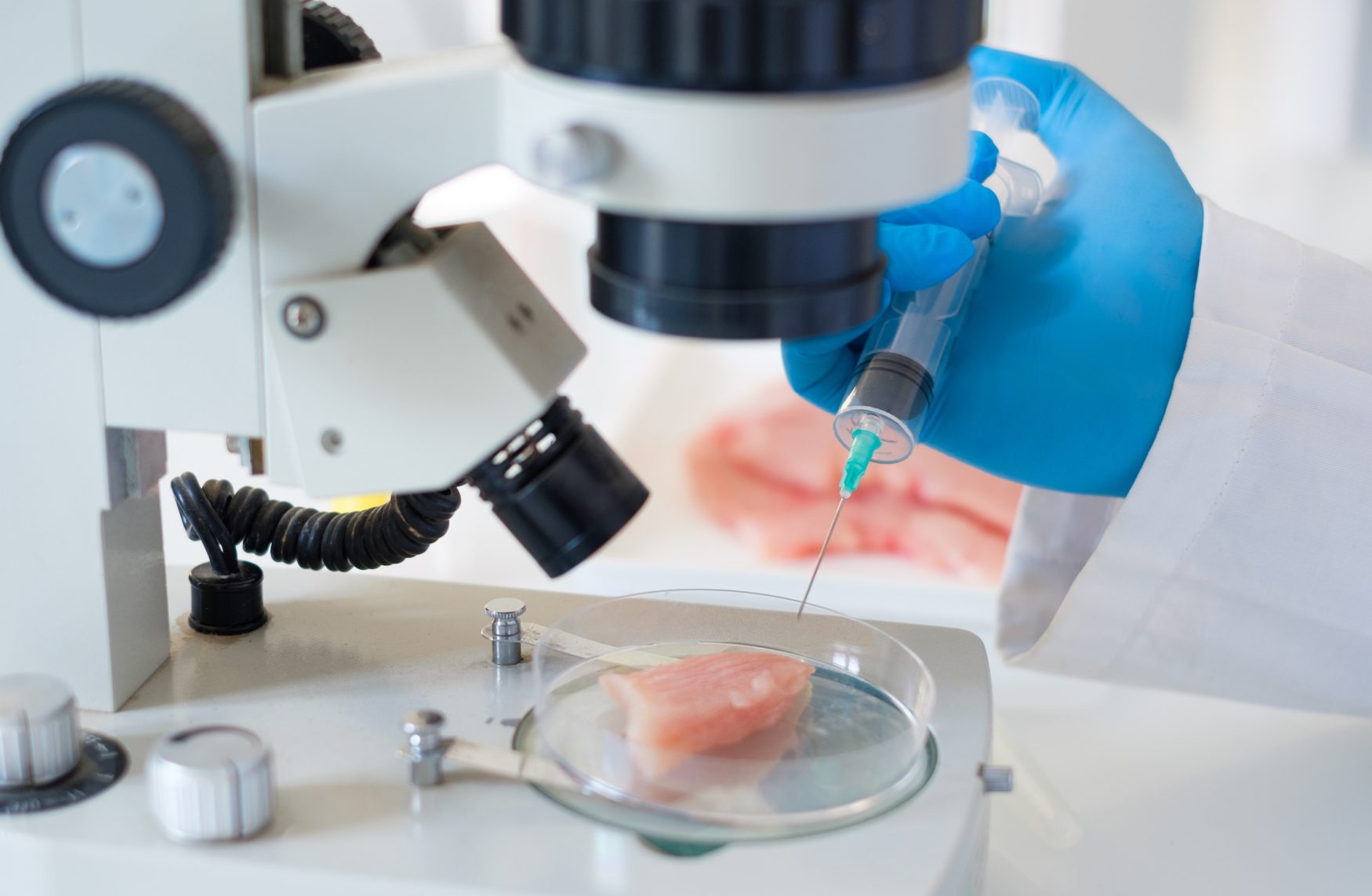
Genetically Modified Animals are Being Bred at Ever Increasing Rates
Genetically Modified Animals Aren’t as Tasty as you Might Think.
Genetically Modified Animals, argue Frankenstein like scientists, are as old as life itself.
They point out that varieties of domestic dogs have been created through selective breeding for thousands of years. In many respects, they are absolutely right.
Selective breeding, chemicals, viruses and radiation have been reshaping animal genes for thousands of years.
Now however, scientists have the means to directly reshape the genetic profile of any animal on earth.
They do this by rearranging the basic building blocks of life… the DNA. A technique called transgenesis is used.
This involves inserting a tiny needle with a piece of DNA into a fertilised egg.
The egg is then taken and reimplanted into a surrogate mother.
This new genetic structure is then passed down to subsequent generations and becomes embedded in the lineage of the animal.
The problem that many scientists have today, and one of the main concerns off genetic campaigners, is that the technique of transgenesis is very hit and miss.
Hit and Miss
Currently, scientists can only take relatively large chunks of DNA for re-implantation into an embryonic cell.
The issue is that many of the changes in these embryos are unforeseen and create unintended consequences.
Dolly the Sheep… RIP
It is the inability to correctly control the genetic modification which is worrying many campaigners.
Already, scientists have successfully cloned many complex animals.
One of the most famous was Dolly the sheep which was cloned in Scotland in 1996. This was the first mammal to be cloned from a somatic cell.
Conspiracy theorists will delight that the first artificial creation of a mammal took place near Roslin Chapel, widely considered by many to be a possible resting place of the Holy Grail, made famous by Dan Browns book, “The DaVinci Code”.
However, this is just a coincidence. It is the biological research facility at the University of Edinburgh in Scotland.
The process of genetically modifying and engineering animals is gathering pace.
In 2005, 32% of all animal procedures in UK laboratories were GM experiments on animals.
The rapid rate of growth of this type of research is leading to hopes that diseases like Parkinson’s disease, schizophrenia and asthma may be cured through this process.
All isn’t as it Seems
One of the most disturbing aspects of genetically modified animals is that, if animals follow the legal path of genetically modified plants, large corporations will end up owning patents to all animals in the future.
Monsanto first pioneered this move by patenting the first lifeform, a genetically modified seed.
Since that date, any farmer who plants crops which are cross infected with Monsanto’s GM crops must pay royalties to Monsanto.
It isn’t impossible to see a situation where the same is true of breeding animals.
If a non-GM modified cow breeds with genetically modified animals, the patented holder will be due royalties from future generations of the animals.
In this scenario, entire species of genetically modified animals could become the property of corporations to be exploited as they please.
This is the nightmare scenario for humanity. Corporations will be able to charge us whenever they please not only for seeds but also for livestock.
This way lies slavery.

 My First Amazing Ayahuasca Experience
My First Amazing Ayahuasca Experience  Pine Needle Tea
Pine Needle Tea  The REAL Controllers of Humanity: The Papal Bloodlines
The REAL Controllers of Humanity: The Papal Bloodlines  Is it Global Warming or Cooling?
Is it Global Warming or Cooling?  Gun Rights and Obama Examined
Gun Rights and Obama Examined